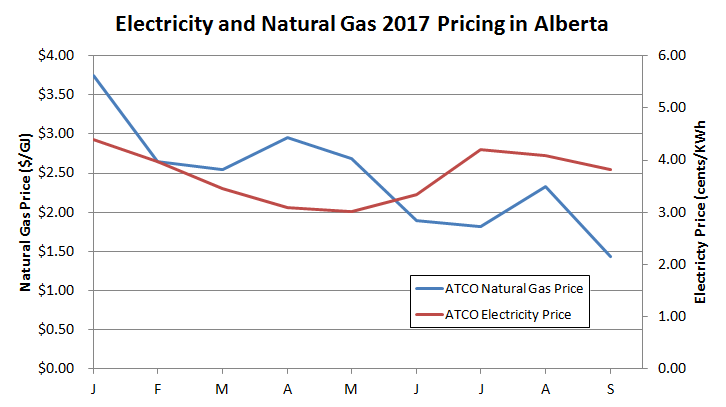Have you ever looked at your electricity bill in depth to see what you are even paying for? If you are like me, then you probably just look at the final charge, pay it, and forget it. But what is it that you are being charged exactly and why do prices seem to fluctuate from month to month?
Perhaps the most obvious answer to this question is "Well I used more/less electricity than last month." While this can be true, the rate at which you are being charged can also fluctuate.
On a typical electricity bill, there are two charges: (1) Energy Charge, and (2) Delivery Charge. Both charges depend on the amount of electricity used. In a deregulated electricity market like here in Alberta, different retailers will buy electricity from the wholesale market, and deliver electricity to homes/buildings through transmission and distribution lines and charge energy/delivery charges. Depending on the retailer, the charges will be at different rates. The beauty about a deregulated electricity market is that naturally a competitive market exists between different retailers, which drives down energy charges.
Alberta and Ontario are the only two jurisdictions in Canada with regulated electricity markets, with Alberta being the only "fully" efficient deregulated market. Throughout the United States, deregulation is becoming a trend and moving away from a single large company or entity that reigns over or "regulates" the market.
So why are some electricity markets regulated? Let's take a look at some pros and cons:
Regulation Pros:
-Costs can be reduced through economies of scale (i.e. one giant player that controls wholesale electricity generation, transmission, distribution, and retail)
-Because it's a necessity... everyone needs electricity!
Regulation Cons:
-Based on the inherent risk that a single monopoly will exist, and therefore, charge whatever price they want to the consumers
-Regulated price caps don't reflect true demand and supply relations, i.e. you might end up inadvertently setting a price ceiling (causing a shortage) or price floor (causing a surplus)
Okay, so we don't want a monopoly situation, so why don't all markets deregulate their electricity infrastructure? Well first of all, there must be a set number of conditions to exist for a competitive market to exist:
1) Lots of players in the market
2) No barriers to enter or exit the market
3) Efficient electricity transmission and distribution system to support the competition
Once these conditions have been met, then a deregulated market can begin to take place. However, there are both good and bad sides to this type of market as well:
Deregulation Pros:
-Cost minimizing incentives exist since there is competition
-Market sets the price through supply and demand equilibrium instead of one monopoly setting a price
Deregulation Cons:
-No real time metering pricing (fixed rate on your bill)
-No storage for excess demand during times of peak capacity, which can cause wild price fluctuations
During peak demand times, supply runs out and the marginal cost to produce one extra unit of power goes to infinity. This is similar to a decrease in cryptocurrency mining payouts when mining difficulty increases, or on a more basic level, the law of diminishing returns. Because marginal cost essentially begins to go to infinity when capacity runs out, what is the right shortage pricing? Here in Alberta, its $1000/MW-hr. In some places like Australia, shortage pricing can be as high as $14,000/MW-hr.
However, during times of scarcity, prices from wholesalers can go negative if demand is really low (these negative prices are usually offset by incentives from the provincial and federal governments so the wholesalers remain profitable).
When setting electricity costs, wholesalers must consider their capital sunk costs (fixed) and variable costs such as fuel, variable operation and maintenance, and emission costs. Fuel cost is based on the heat rate of the generator (MMBtu/MWh) and the price of natural gas ($/MMBtu). Therefore, when computing the electricity generation costs, natural gas price fluctuations affect the cost of electricity the most, and therefore natural gas essentially sets the price in the electricity market as seen in the Figure below:
Knowing the basics and high level structure of how the electricity market in your jurisdiction works and operates is important to get a sense of the holistic economic picture of the power generation industry. Realizing the trend of electricity market deregulation in Canada and around the world is important to stay current with where the industry is moving. Know where your money is going and what you are paying for when you receive your next electricity bill. If you are lucky and live in a region with a deregulated electricity market, then you have freedom to choose between many different retailers for your power. Deregulation is trendy so jump on the wagon!

